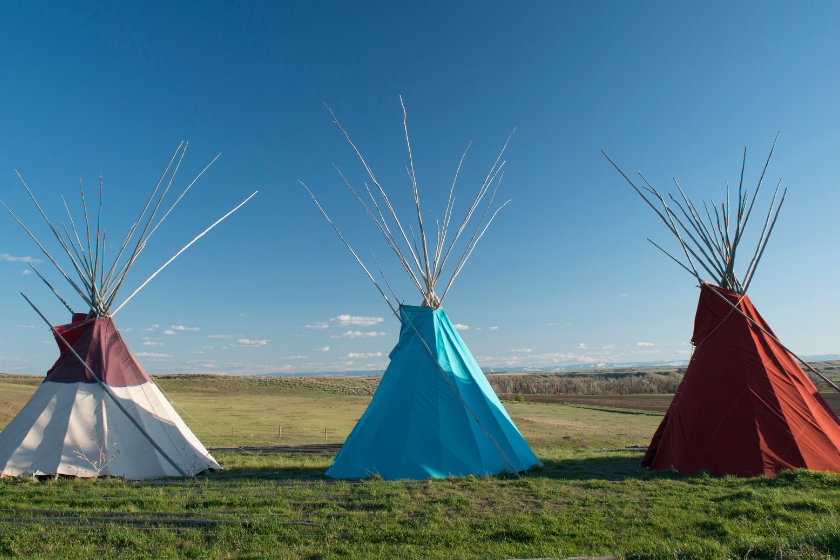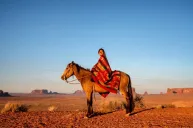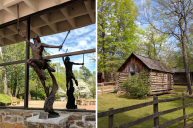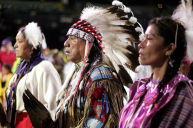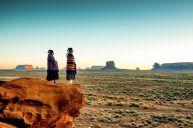With the growing awareness around respecting and honoring Native cultures, it is crucial to educate yourself and those around you about the first stewards of this land. The federal government officially recognized November as National Native American Heritage Month or, as Indian Tribes would rather say, "Indigenous Peoples Heritage Month."
Although all State Parks, National Parks, National Monuments, and Historic Sites are all on Indigenous land, certain areas and modern-day parks have deeper roots among the first peoples of this land. Some pro tips to think about before visiting Native lands is researching using Native-Land.Ca to see who the land belongs to, to find organizations like Indian Law or tribes to donate to or support, or at least to educate yourself on the "dos and don'ts" of traveling to a specific Indian Nation.
Indigenous and Native Americans & the U.S. Government
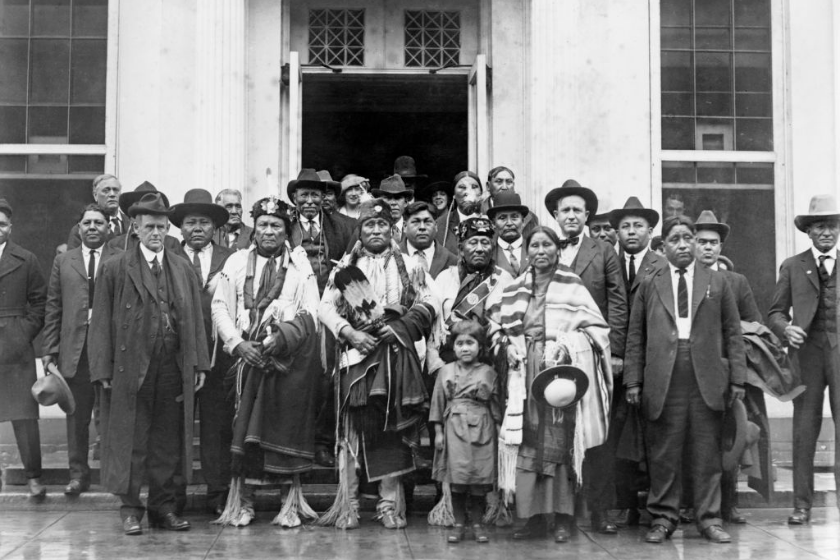
History Archive/Universal Images Group via Getty Images
The tumultuous history of Indigenous roots in modern-day America is a tense and complicated relationship that deserves far more than a few paragraphs. Still, for the sake of your time, we will keep it brief and to the point. The main takeaway is that Indigenous tribes in America now are slowly but surely gaining their rightful place via reparations, power, and the returning of tribal land via trust lands, treaties, leases, and private deals.
From the horrendous Trail of Tears to the back and forth with Congress, Supreme Court, and the United States Government to the creation of the Bureau of Indian Affairs (BIA) to the Dawes Act to the Indian Reorganization Act to the General Allotment Act, the fight for tribal sovereignty is traumatic for Native American Tribes. Their homelands were colonized, settled, and stripped of their natural resources and potential for economic development.
Now, Native American tribes are finally getting the sliver of awareness and recognition they deserve. We even recently saw the return of 1,200 acres of land in Big Sur, California, transferred back to the Esselen Tribe of Monterey Country!
Public Lands with Deep-Rooted Native American Connections
Crow Indian Reservation, Modern-Day Montana
https://www.instagram.com/p/CH4VzAQnZC6/
Nestled approximately 10 miles from Billings in south-central Montana, the Crow Indian Reservation is the largest in Montana, composed of 2.2 million acres. Wyoming borders the Crow Reservation to the south, North Dakota and South Dakota to the east, Idaho to the west, and Canada to the north. Montana is home to seven American Indian reservations and the state-recognized Little Shell Tribe of Chippewa Indians.
The original name of this Native Tribe is Apsáalooke, which means "children of the large-beaked bird." Unfortunately, after colonization, the white man misinterpreted the world as "Crow." The annual Crow Tribe celebration happens at Crow Native Days in June and again with the Crow Fair and Rodeo in July. The Crow Tribal Council runs the tribal nations and tribal governments of the Crow reservations.
Cherokee Nation, Modern-Day Oklahoma
https://www.instagram.com/p/CWUAz48JGwT/
Bordered by Texas, New Mexico, Arkansas, Missouri, Kansas, and Colorado, the mighty Cherokee Nation lies in the modern-day state of Oklahoma. The Cherokee Heritage Center is an educational hub for anyone to learn the harsh realities of life as a Cherokee native. Tribal members helped formulate the Heritage Center on the historic grounds of the Cherokee National Female Seminary, the first learning institution for females west of the Mississippi.
Honor and pay respects to those massacred during the Trail of Tears at the permanent exhibit at Heritage Center. From the Cherokee people's actual land to their forced removal and transfer to their present-day "Indian Territory" in Oklahoma, six galleries showcase the heartbreaking tale through artifacts and stories.
Navajo Nation, Modern-Day Utah & Arizona
https://www.instagram.com/p/CU5Y6w7pE01/
Federally recognized at Navajo Nation, the best way to discover these stunning and sacred lands in the Southwest portion of the country is to hire a genuine Navajo guide. This is one of the best ways to support tribes and help with the millions of yearly visitors they see to hot spots like Antelope Canyon, Canyon de Chelley National Monument, and the Painted Desert.
Alaska Natives, Modern-Day Juneau & Beyond
https://www.instagram.com/p/CGRBhqBnxib/
The region of Alaska is home to eleven Native cultures:
"Eyak, Tlingit, Haida, Tsimshian peoples live in the Southeast; the Inupiaq and St. Lawrence Island Yupik live in the north, and northwest parts of Alaska; Yup'ik and Cup'ik Alaska Natives live in southwest Alaska; the Athabascan peoples live in Alaska's interior; south-central Alaska and the Aleutian Islands are the home of the Alutiiq (Sugpiaq) and Unangax peoples."
Looking at the 2014 Census, Alaska has the highest racial rate of people identifying as American Indian or Alaska Native. If you ever make it to Juneau, you can visit the Alaska State Museum to discover Alaska's history, art, and culture through the museum's permanent and seasonal exhibits.
A Call to Action
As a person who recreates and enjoys the pleasures of spending time in natural areas, I have a responsibility to take action. Whether it's by way of acknowledgment of the Native American land you are on (https://native-land.ca/), signing petitions, showing up to rallies, or donating to local tribes, I believe we (and any non-Indian or Native people) should always be thinking of the original stewards of our great country and the heritage of Indian land.
I invite you to join me. Read and learn more about places you can visit, like the Smithsonian National Museum of the American Indian (NMAI) in Washington, D.C., or The George Gustav Heye Center in New York City here.
Share how you honor Native American lands on our Wide Open Roads Facebook!
